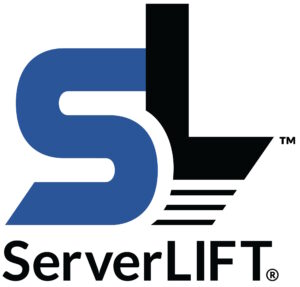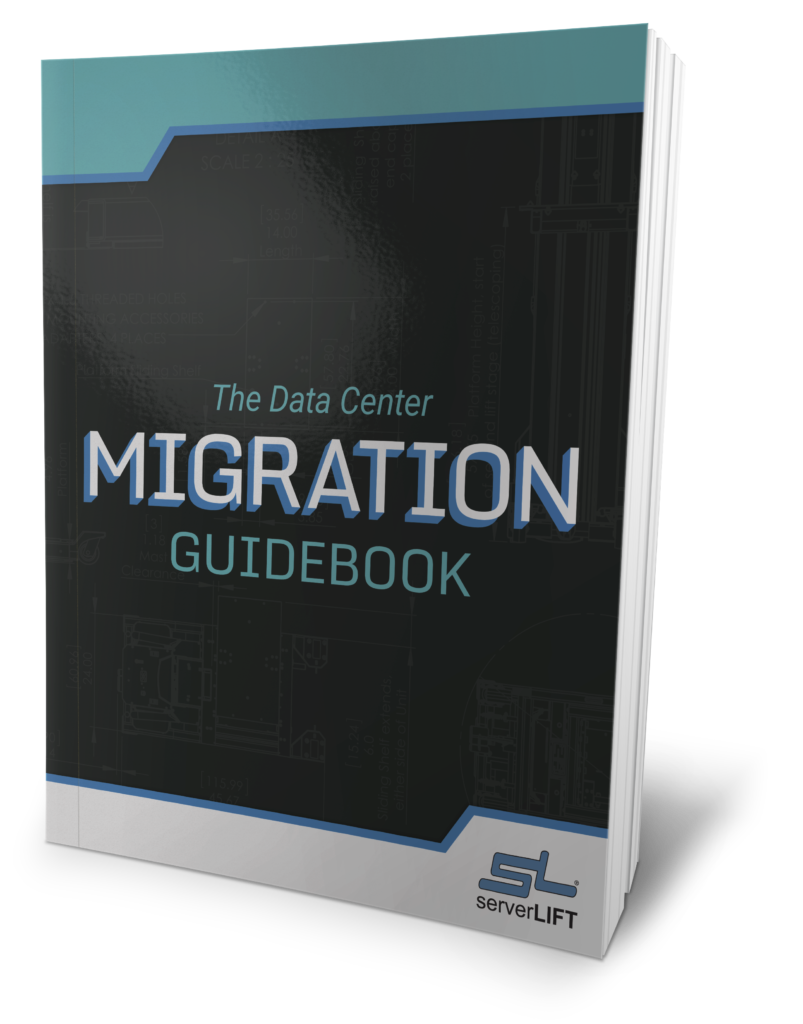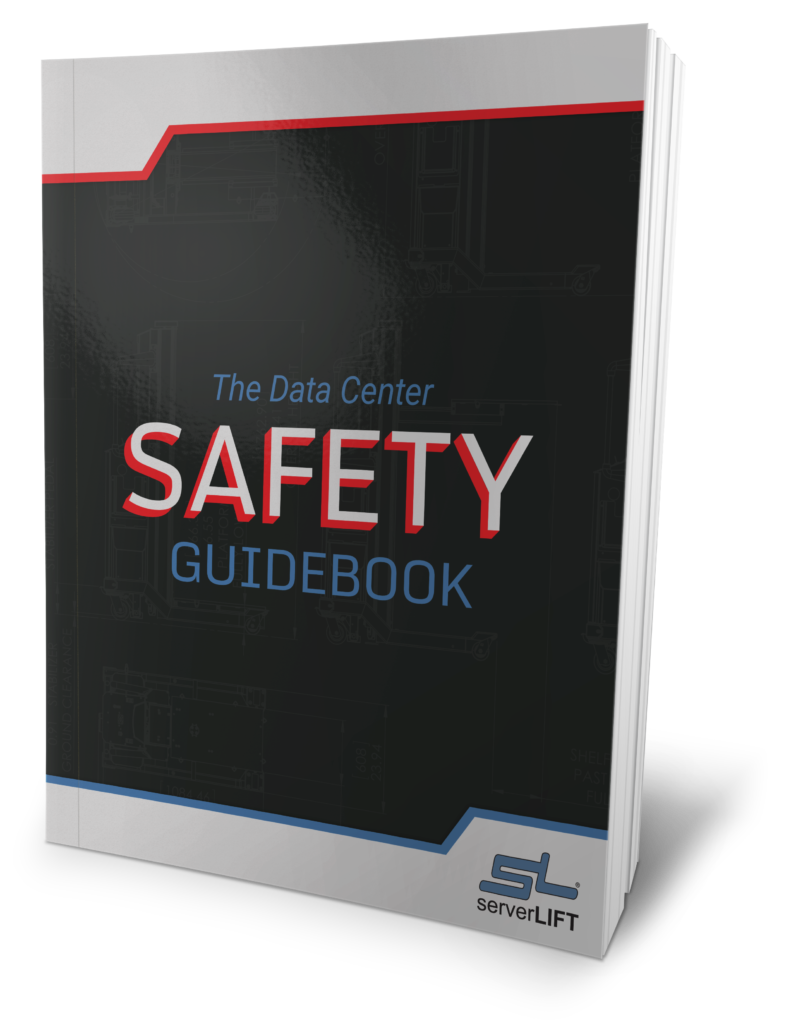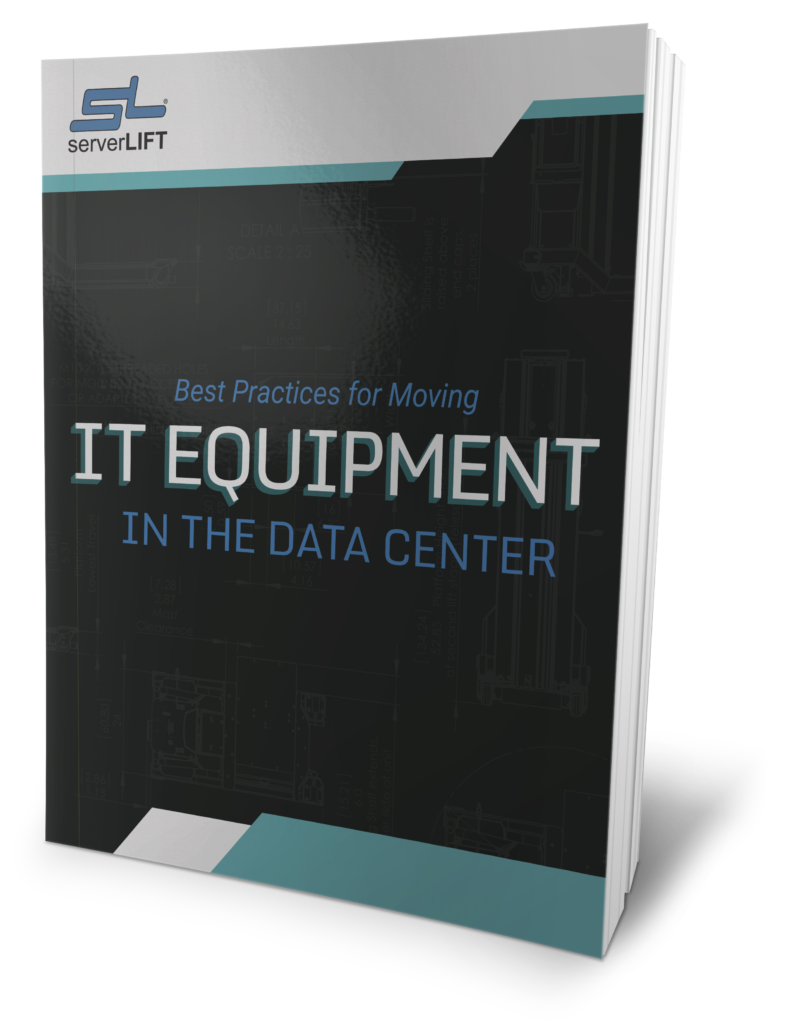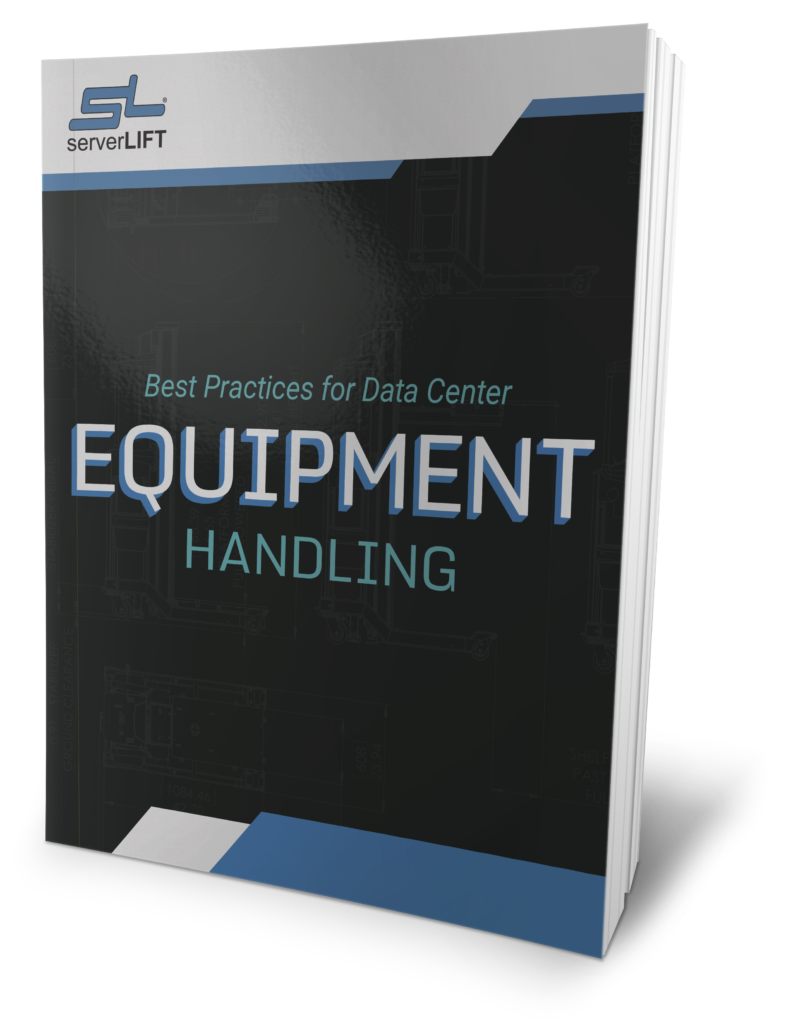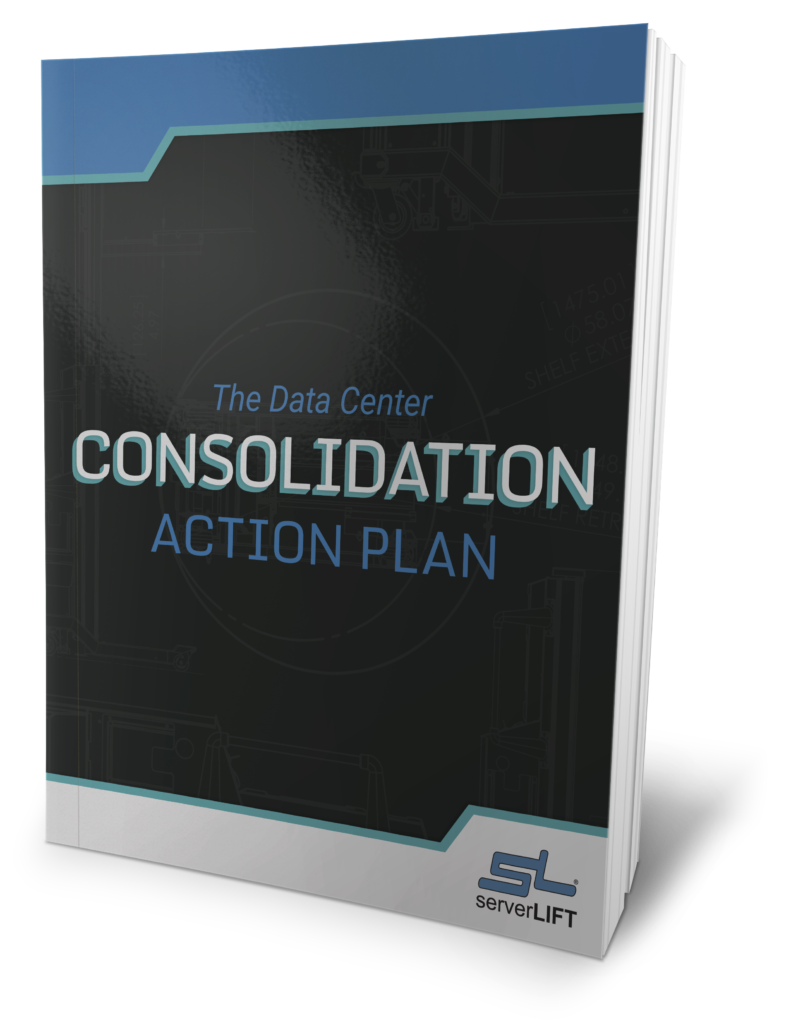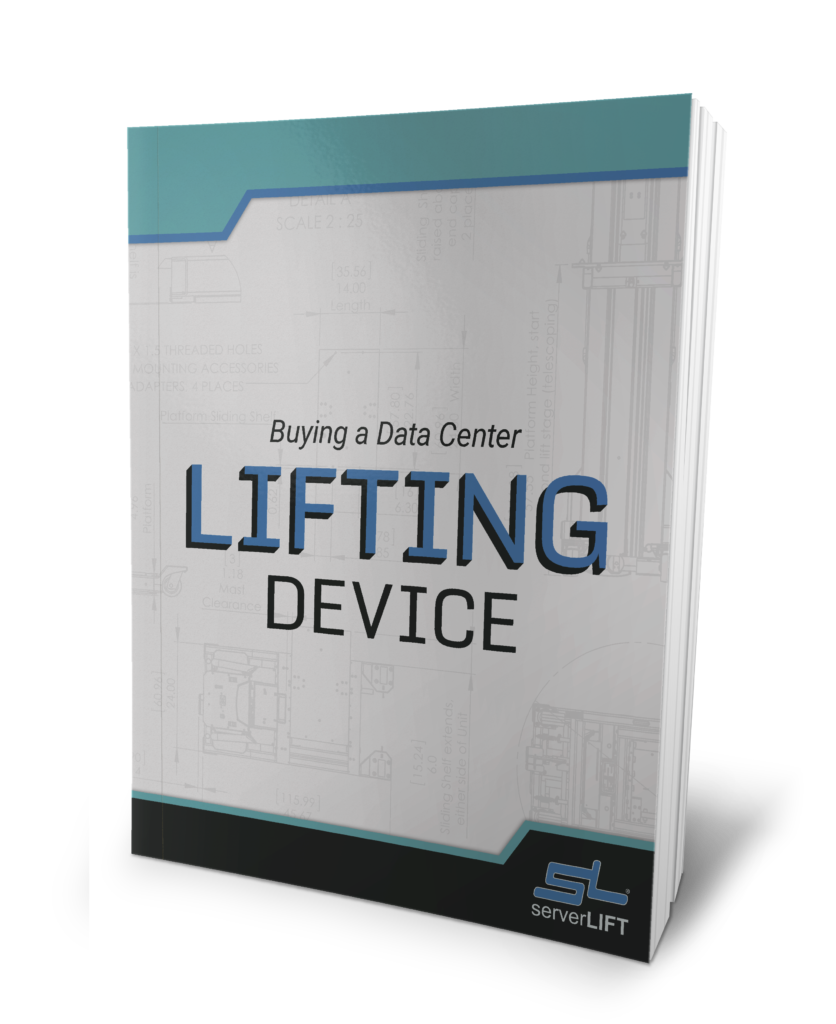ServerLIFT® simplifies hardware equipment relocation in data center migration. But how do you know HOW and WHERE to place the equipment?
When we heard about ServerLIFT®, we thought – what a brilliant, simple, elegant idea. This will drastically decrease personal injury and server damage, speed up the server placement and removal process and generally make everybody happier, healthier and more productive. So, now that you know the right way to add, move and decommission servers, how do you know where to place them? How do you know what area of your data center can support them? Where do you have enough space, cooling and power? That’s where Data Center Infrastructure Management (DCIM) comes in. DCIM is used every day by major data centers to determine where to place servers based on operational needs, and ensures that they “fit” within the available power, space and cooling capacity – at every stage from the rack, to the row, to the room, to the floor, to the entire data center. DCIM solutions deliver real-time, accurate information on all the critical systems in a data center. With this up-to-the minute information, the user can engage in capacity planning and make well-informed decisions. For example, here are some of the reports data center managers have found useful: Room Overview and “Available U Space” reports – Show at a glance how much room is left on the floor and in each server cabinet, how close it is to capacity and how much more equipment it can support. Cabinet Watt Load – Shows watts per cabinet and available wattage. It helps the user identify areas with sufficient capacity for the wattage required to support new equipment. Cabinet Detail – Shows peak usage, so the new equipment won’t exceed the maximum allowable power. Heat Map – Temperature sensors in the data center (wireless or wired) provide the data for a real-time “thermograph” which shows hot and cool spots, and will guide the manager toward changes that might need to be made to more efficiently cool the environment. These changes can include adjusting fan speeds, rearrangement of assets or the addition of a perforated floor tile, to remediate potential temperature-related problems. The Heat Map can also make a manager aware of areas of the data center that could support new equipment without temperature becoming an issue. Some customers even use real-time temperature information to safely raise room temperature, without threatening uptime, to save on cooling costs. If, on the other hand, a data center has no temperature sensors, a BTU Heat Map can help the user understand the remaining cooling capacity. All this real-time knowledge greatly simplifies asset placement, and can reduce the time needed to add a new server from days to minutes. It also allows a data center manager to make the most of existing infrastructure and assets, delaying or eliminating the need for CapEx and expensive build-outs. Another large part of the value of DCIM is alarm monitoring. These alerts warn a manager of a potential problem while there is still time to make changes, before the issue becomes critical. Issues like a room temperature going too high or a “teamed” pair of circuits reaching a pre-determined limit are much easier to handle with a little notice. DCIM systems can also keep track of your humidity, water leakage, even levels of fuel in back-up tanks. So, it’s important that the DCIM Solution that you choose can “speak” to your other monitoring systems – your BMS, EPMS, SCADA, etc. Also, make sure that your system will have no problem scaling with you as your facilities grow. If you have multiple locations, make sure that your DCIM system can handle the massive amount of data they generate. Come to think of it, DCIM has a lot in common with ServerLIFT®. A simple, effective idea. Speeds up server placement. Makes everybody involved happier and more efficient. Great minds think alike.
Sobre as soluções FieldView
A FieldView Solutions fornece aos gerentes dos complexos data centers de missão crítica e instalações Co-Lo de hoje, ferramentas de software escaláveis baseadas em navegador que oferecem uma visão em tempo real de todos os aspectos do gerenciamento de infraestrutura de data center (DCIM). O principal produto da empresa, FieldView, ajudou profissionais de operações de TI e instalações de datacenter em muitos dos maiores datacenters, incluindo seis dos 10 principais bancos, três dos cinco principais provedores de tecnologia e 12 das maiores instalações de Co-Lo da região. EUA, Europa e Ásia / Pacífico desde 2006 - monitorando mais de dois gigawatts para as maiores instituições financeiras, instalações de co-localização, instalações governamentais e gigantes de telecomunicações. A equipe da FieldView Solutions é composta por profissionais do setor com experiência demonstrada no design e operação de data centers e no desenvolvimento de plataformas de tecnologia que os atendem. As soluções FieldView atendem às necessidades de uma ampla gama de usuários, até os clientes corporativos globais em maior escala. Para mais informações visite www.fieldviewsolutions.com.




